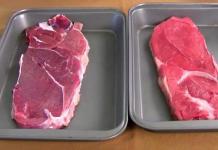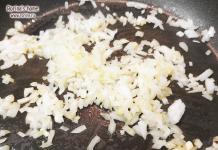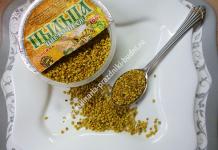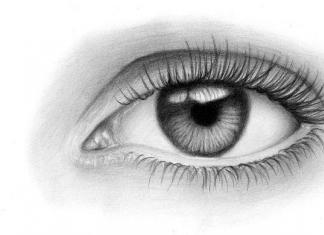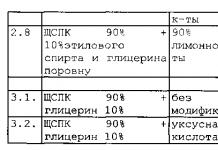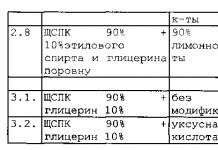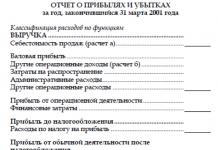“Warm floor” is a special heating system, thanks to which the air flows below the room are heated. In order for this system to work correctly, it is necessary to correctly install it, in particular, select and install the substrate.
The main function of this structural element is simple - to provide thermal insulation. But in addition to this, a high-quality heat-reflecting substrate for a heated floor can act as a waterproofing agent - preventing the accumulation of condensation and the penetration of steam into the system.
Depending on the method of heat supply, the following types of “warm floor” construction can be designated:
- Water;
- Electric;
- Liquid electric, which in turn can be:
- Film (sometimes called infrared);
- Cable.

Each of the above types corresponds to a specific substrate. Let's figure out how to choose and correctly install a heat insulator with your own hands.
Types and characteristics of the substrate
So, when buying thermal insulating flooring, you first of all need to navigate its variety of types:
- Lavsan– film-based coating (foamed polyethylene) with a metallized reflective top layer. Characterized by resistance to aggressive environments. A lavsan underlay for a heated film floor fits perfectly.

Note! This type of insulation is characterized by a certain power density. Therefore, the choice must be made taking into account the finishing coating.
So, when installed under tiles, the power of lavsan is 220 W per m²; under laminate/parquet – 150W per m²; under carpet/linoleum – 220W per m². If you lay a film with a higher UV value than specified, the floor covering may deteriorate due to overheating.
- Expanded polystyrene– cellular insulation. It has a high temperature threshold: from -180° to +180°, and is wrinkle-resistant. It is an excellent sound insulator and has increased resistance to bacteriological influences. Has a foil or polypropylene coating. It is considered an excellent option for underlayment for water heated floors.

A distinctive feature of this heat insulator is that it is produced in slabs with ready-made markings (50 to 50), which greatly simplifies the subsequent process of installing the floor. Slabs with different thicknesses are available for sale: from 20 to 50 mm.
- Technical cork, cork backing. It is environmentally friendly and therefore hypoallergenic. Its composition is compressed cork oak bark + astringent substance – suberin. Not eaten by rodents. As a rule, cork is used as a substrate for laminate flooring.
Despite this composition, the insulation is not flammable and shows excellent resistance to mechanical stress. It is optimal for arranging a water floor.

- Polypropylene (penofol). Combined insulation, consists of foamed polyethylene. One side of it is covered with foil. Thanks to this structure, polypropylene has high heat retention properties. It is somewhat inferior to its cork counterpart in terms of its qualities. This foil backing for underfloor heating is practical and durable.

Note! The substrate should not contain aluminum, since it is an excellent conductor of electricity. Therefore, if the contacts are defective, a short circuit is possible.
Functions of insulating flooring
If you are wondering whether an underlay is needed for an infrared heated floor, then you should pay attention to the following functions of the flooring:
- The main task is to reduce heat loss. The substrate directs IR rays into the room, preventing them from spreading to the lower floors or basement of the building. Due to this reflection, heat is not wasted, and the efficiency of the system corresponds to 95-100%. The use of such insulation can reduce heat loss by an average of 20-30%.
- As mentioned above, the underlay acts as a waterproofing layer, protecting the flooring from steam and moisture.
- It is capable of leveling out minor surface imperfections, which is very important when using film-type floors.
- High-quality insulation, for example, Valtec underfloor heating, can significantly reduce the amount of noise. It is made of foamed polystyrene and has a foil side.

Note! Fiberboard slabs can be used as a bedding for coverings that require a solid base (support for a tile covering, for example).
How to choose a quality product
The main criterion for choosing this material is not the price, but the technical characteristics, which should be based on two criteria:
- Finish coating. For example, if you plan to lay laminate flooring, then you should choose a soft substrate, since it perfectly levels the base. For linoleum, it is recommended to choose solid thermal insulation, since this coating is a soft material, and therefore, together with soft insulation, it can easily be pressed through by furniture legs.
- Floor evenness. If you are dealing with a coating characterized by significant level differences, then you should choose soft thermal insulation, since it is more flexible. If the unevenness is small, then it is better to choose a more rigid flooring.
We carry out installation
As an example, let’s look at the installation of film heated floors.
There is the following instruction:
- We lay the thermal insulation substrate on the cement base.
The underlay under the laminate for heated floors is laid end-to-end. In this case, the sheets are connected to each other using tape.
- We place a heating film on top of the substrate. The strips should not intersect or overlap.
Advice! You can cut the film electric heated floor only in those places indicated by the manufacturer (dashed line). Otherwise, you risk compromising the integrity of the wiring.
Heated floor elements must be laid at a distance of at least 100 mm from the walls. In this case, the area covered by the film must be at least 70% of the area of the room.
Laying film under furniture is prohibited! Marks along which the film can be cut are present on the canvas every 20-30 cm.
- Electric heated floors made from films use a parallel connection circuit. For this purpose, special clamp-contacts are made. By crimping they are connected to copper busbars. In this case, the contact point on both sides is insulated using bitumen insulation (supplied in the kit).
In order to install the strips, a stranded copper wire with a cross-section of at least 2 square meters is used. (assuming the current is 16-20 A).

- The temperature sensor is being installed. We do it this way: we cut off a strip of bitumen insulation and glue the temperature sensor under the heating film near the thermostat.
- Check the functionality of the heating elements. To do this, the system is turned on for 15 minutes.
- A layer of vapor barrier must be laid on top of the heating surface. It is represented by ordinary polyethylene film.

Heated floors are no longer a luxury item. This type of heating is very popular both in private houses and in standard apartments. Most often, underfloor heating is installed on the first floors of multi-story buildings with an unheated basement.
The “warm floor” system is demanding for installation. To properly arrange such heating, a foil layer is required. The underfloor heating retains heat from radiators or radiators, directing it indoors.
Purpose of the substrate
Today, three types of heated floors are produced:
- water with a pipe system;
- powered by electricity;
- heated film mats (infrared).
All types of systems have their advantages and disadvantages, which are taken into account during installation. Each design has its own installation nuances, but one thing is the same for all floors - they require a substrate. Such a screen increases the efficiency of the system, protecting it from heat loss.

Note! The minimum thickness of the effective layer must be at least 30 microns. The correct coating has a protective layer.
Substrate for water floor
Before installing and purchasing a lining, you need to understand its exact purpose. This will help you choose the right coating.
The layer for water floors is laid between the subfloor (screed) and the heating structure itself. The main function of the substrate is to retain heat and reflect it from the base. Infrared radiation is reflected from the foil surface and enters the room.

Heat is reflected due to the high thermal insulation properties of the material. It is its presence in the structure that prevents heat from being wasted on heating the floor slab; all infrared radiation is directed into the rooms. This phenomenon is called the thermos effect. In addition to thermal insulation properties, the foil underfloor heating provides protection from moisture.
Material selection
The most important criterion for a heated floor layer is the thickness of the material. In addition, the reflective layer should:
- have high levels of thermal and waterproofing, usually these characteristics are indicated on the packaging;
- have a composition that is safe for humans and animals;
- have a high degree of reflection of infrared radiation;
- be resistant to temperature fluctuations;
- have high sound insulation rates;
- be resistant to mechanical deformation;
- have an easy styling technique accessible to everyone.

Most often, the substrate is made of foil-coated material. Such layers are more effective in heat reflection. In addition to this material, the construction market offers the following types of underlays for heated floors:

Prices for such materials vary depending on the type and company. The cost largely depends on the thickness of the substrate.
Advice! If you are installing a heated floor under tiles, choose penofol for the insulating coating. The material provides good adhesion of the heating system to the screed.
Installation technology
One of the installer's tasks is to reduce the layer of the entire heated floor structure. Such a system can hide up to 25 cm of a room, which affects its area. To reduce the thickness of the structure, experts use thin but effective materials.
The installation of the substrate is carried out on a pre-prepared base. Lay the layer with the reflective surface facing up. The layers of the interlayer are laid end-to-end, gluing the seams with metallized tape. This connection protects the floor as much as possible from heat loss and moisture ingress.
When installing the reflective layer, it is necessary to use penofol, as it protects the foil from destruction when the solution penetrates.
Any type of substrate must be placed on the walls when laying. When installing the material with an overlap, you need to make an approach to the wall of 7 cm or more. This measure will protect the lower floors from flooding in the event of a leak or damage to the floor system.
For substrates with low waterproofing properties, a water “pie” must be laid. Its installation includes the following steps:

Depending on the type of heating system, the process may have its own nuances. In general, the installation of the structure is similar for all types of structure.
Substrate for electrical structure
The same types of substrates are used for electric floors as for water floors. However, electrically powered systems do not require waterproofing.
Installation of an electric floor begins with leveling the base. After drying, a substrate is placed on it, which is secured with a special tape. Heating mats or cables are attached to the film with brackets.

Note! You should not use foil materials as a substrate for an electric heated floor. Such a layer is a good conductor, which can lead to a short circuit if the floor system fails.
- polypropylene and foam materials;
- natural cork;
- metallized penofol.
One of the most popular manufacturers of components for heated floors is the Energoflor Compact company.

Underlay for infrared heated floors
For the high-quality functioning of infrared underfloor heating, two recommendations must be followed:
- strict adherence to installation technology;
- installation of heat-reflecting material with foil facing up.
When laying a reflective layer under a heated floor, it is recommended to follow the following advice from professional craftsmen:


By following these simple rules, you can easily install and select a high-quality substrate yourself. Be sure to consider the composition of the material and its compatibility with your heating system.
There are reflectors that can greatly facilitate the process of installing electrical cables. These are the so-called layers with bosses. The design of such material is a carpet dotted with dense rows of protruding cylinders. These projections are called bosses. It is very convenient to lay the underfloor heating cable between them. This installation does not require additional fasteners or adhesives - the bosses firmly hold the cable on the surface of the interlayer, preventing them from moving to the side.

Recently, warm heated floors have been increasingly used for arranging heating systems. These systems are used both in private buildings and in urban apartment buildings. Designs may differ in operating principles and characteristics. The most important element of a warm floor is the underlay. This article will tell you which heated floor to choose and what types of underlays there are.
 Today there are various models of heated floors. Not only foreign options, but also high-tech domestic models are very popular among consumers. For example, the “National Comfort” design. The system can be installed in any room of the apartment. But, this product is especially valuable in the kitchen and bathroom.
Today there are various models of heated floors. Not only foreign options, but also high-tech domestic models are very popular among consumers. For example, the “National Comfort” design. The system can be installed in any room of the apartment. But, this product is especially valuable in the kitchen and bathroom.
Among the advantages of underfloor heating from this company are:

 National comfort for heated floors - only positive reviews. Most users note the following advantages of using this system: long service life, ease of installation, high-quality heating. Among the disadvantages, perhaps only the high cost is mentioned. But, in principle, the purchase is justified. After all, high quality cannot have a low price.
National comfort for heated floors - only positive reviews. Most users note the following advantages of using this system: long service life, ease of installation, high-quality heating. Among the disadvantages, perhaps only the high cost is mentioned. But, in principle, the purchase is justified. After all, high quality cannot have a low price.
 Equation heated floors have also proven themselves well, distinguished by their high performance characteristics, reliability and safety. This design is moisture resistant and durable. Regardless of what brand of heated floor is used, it is advisable to ensure that the system has a high-quality, heat-reflecting substrate. Without it, heating is unlikely to be effective.
Equation heated floors have also proven themselves well, distinguished by their high performance characteristics, reliability and safety. This design is moisture resistant and durable. Regardless of what brand of heated floor is used, it is advisable to ensure that the system has a high-quality, heat-reflecting substrate. Without it, heating is unlikely to be effective.
Purpose of the substrate for a heated floor system
 The substrate can significantly increase the efficiency of the heating circuit. And this is regardless of whether it is infrared film, electric heating cable or water pipes. Thus, a heat-reflecting underlay for a heated floor reflects thermal radiation, preventing it from leaving the apartment. In addition, this element allows you to remove defects in the base of the floor, serves as a sound insulator, and has thermal and waterproofing characteristics. The last property is extremely important for systems with a water coolant: if a pipe breaks, the substrate will prevent the flow of liquid into the room on the lower floor.
The substrate can significantly increase the efficiency of the heating circuit. And this is regardless of whether it is infrared film, electric heating cable or water pipes. Thus, a heat-reflecting underlay for a heated floor reflects thermal radiation, preventing it from leaving the apartment. In addition, this element allows you to remove defects in the base of the floor, serves as a sound insulator, and has thermal and waterproofing characteristics. The last property is extremely important for systems with a water coolant: if a pipe breaks, the substrate will prevent the flow of liquid into the room on the lower floor.
Types of substrates
 There are various substrates: cork, extruded polypropylene, polyethylene foam, polystyrene. The most common and budget option is polyethylene foam. It is produced with a foil coating to impart reflective properties. It is advisable that the purchased substrate already has a foil layer. Otherwise, you will have to add additional foil. This material allows you to retain up to 98% of heat and perfectly helps eliminate heat loss in the apartment. Of course, the price of foil for heated floors is low and you can buy it in any store, but it’s still an additional hassle.
There are various substrates: cork, extruded polypropylene, polyethylene foam, polystyrene. The most common and budget option is polyethylene foam. It is produced with a foil coating to impart reflective properties. It is advisable that the purchased substrate already has a foil layer. Otherwise, you will have to add additional foil. This material allows you to retain up to 98% of heat and perfectly helps eliminate heat loss in the apartment. Of course, the price of foil for heated floors is low and you can buy it in any store, but it’s still an additional hassle.
The use of a certain type of underlay depends on the floor covering and the type of heated floor.
 So, in a water heating system, molded foam with grooves for hinges should be used. Of course, the price of installing a warm water floor with such an additional insulator will be higher. But, according to reviews, such a reflective substrate provides reliable thermal insulation and also provides more uniform heating.
So, in a water heating system, molded foam with grooves for hinges should be used. Of course, the price of installing a warm water floor with such an additional insulator will be higher. But, according to reviews, such a reflective substrate provides reliable thermal insulation and also provides more uniform heating.
 If laminate flooring is used, it is preferable to choose polyethylene foam, which has a thin layer. Cork sheets, which are a natural material, are also suitable. This option perfectly tolerates temperature fluctuations and vapor release. It also perfectly absorbs noise, does not crack or rot.
If laminate flooring is used, it is preferable to choose polyethylene foam, which has a thin layer. Cork sheets, which are a natural material, are also suitable. This option perfectly tolerates temperature fluctuations and vapor release. It also perfectly absorbs noise, does not crack or rot.
 In wooden houses and other rooms where it is impossible to install, special plates are used to distribute heat and make heating more uniform. The average price of dry-type underfloor heating plates is about 200 rubles.
In wooden houses and other rooms where it is impossible to install, special plates are used to distribute heat and make heating more uniform. The average price of dry-type underfloor heating plates is about 200 rubles.
 For floors with electric heating, experts recommend foamed foil polymer. This material is thin and reflects heat well. Foil is also used for water-type underfloor heating. Perhaps this is the most popular and versatile material. Therefore, it is worth considering this type of substrate in more detail.
For floors with electric heating, experts recommend foamed foil polymer. This material is thin and reflects heat well. Foil is also used for water-type underfloor heating. Perhaps this is the most popular and versatile material. Therefore, it is worth considering this type of substrate in more detail.
 The foil backing is an aluminum or metallized propylene film, which is made on the basis of foamed polyethylene. Penolon, Alufom and other materials are considered an economical option for the substrate. On average, the price of foil underfloor heating ranges from 45 to 150 rubles per square meter. Of course, the price depends on a number of factors: quality, thickness of the material, manufacturer.
The foil backing is an aluminum or metallized propylene film, which is made on the basis of foamed polyethylene. Penolon, Alufom and other materials are considered an economical option for the substrate. On average, the price of foil underfloor heating ranges from 45 to 150 rubles per square meter. Of course, the price depends on a number of factors: quality, thickness of the material, manufacturer.
 Cork underlay under a warm electric floor can also be successfully used. But, preferably with a metallized or foil coating. It is prohibited to use foil substrates for infrared film heated floors. This is associated with a high risk of short circuit. A metallic coating is quite suitable.
Cork underlay under a warm electric floor can also be successfully used. But, preferably with a metallized or foil coating. It is prohibited to use foil substrates for infrared film heated floors. This is associated with a high risk of short circuit. A metallic coating is quite suitable.
 The only type of heated floors that are installed without a substrate are mats, which consist of a heating cable attached to a flexible base. A substrate with a reflective layer should already be integrated into such a base.
The only type of heated floors that are installed without a substrate are mats, which consist of a heating cable attached to a flexible base. A substrate with a reflective layer should already be integrated into such a base.
Cost of underlayment for heating floor
 It must be said that the price of a substrate for a warm water floor or an electrically heated floor is only 3-4% of the total cost of the system. The cost largely depends on the set of specific characteristics, the material of manufacture and its thickness, type and manufacturer. The average price of this structural element is about 70 rubles per square meter. Many people are afraid of this cost. But it is important to remember that the purchase is completely worth it.
It must be said that the price of a substrate for a warm water floor or an electrically heated floor is only 3-4% of the total cost of the system. The cost largely depends on the set of specific characteristics, the material of manufacture and its thickness, type and manufacturer. The average price of this structural element is about 70 rubles per square meter. Many people are afraid of this cost. But it is important to remember that the purchase is completely worth it.
A good and high-quality substrate has the following characteristics:

 It is desirable that the substrate for a warm water floor or an electric analogue has as many positive features as possible. When choosing, you should pay attention to the quality and thickness of the material. There is no point in saving on such an important element of the heating system. After all, the efficiency of the entire structure depends on this.
It is desirable that the substrate for a warm water floor or an electric analogue has as many positive features as possible. When choosing, you should pay attention to the quality and thickness of the material. There is no point in saving on such an important element of the heating system. After all, the efficiency of the entire structure depends on this.
Features of choosing a substrate
 Manufacturers offer a wide range of underlays for heated floors. And sometimes consumers have difficulty choosing a specific brand. After all, a product is not purchased for one year. And I want the design to work efficiently and properly for as long as possible.
Manufacturers offer a wide range of underlays for heated floors. And sometimes consumers have difficulty choosing a specific brand. After all, a product is not purchased for one year. And I want the design to work efficiently and properly for as long as possible.
To ensure that your purchase does not disappoint, you need to pay attention to the following initial factors:

conclusions
 Thus, the underlay allows the system to operate more efficiently. This element has heat-hydro- and noise-insulating properties. Provides even heating. The most commonly used underfloor heating is foil, which is the most budget-friendly and at the same time high-quality option. Its cost is quite acceptable for most consumers.
Thus, the underlay allows the system to operate more efficiently. This element has heat-hydro- and noise-insulating properties. Provides even heating. The most commonly used underfloor heating is foil, which is the most budget-friendly and at the same time high-quality option. Its cost is quite acceptable for most consumers.
The underlay is an important element of a heating floor.
 Therefore, it is not worth saving and buying the cheapest products from unknown manufacturers. The material must be of high quality. Moreover, the substrate allows you to save energy. And the microclimate with this element will be as comfortable as possible.
Therefore, it is not worth saving and buying the cheapest products from unknown manufacturers. The material must be of high quality. Moreover, the substrate allows you to save energy. And the microclimate with this element will be as comfortable as possible.
The technology of heating rooms using underfloor heating systems is becoming increasingly popular today. Depending on the type of heating elements, heated floors are available in several modifications, which allows the use of any floor covering. An important aspect of the high-quality and efficient operation of such heating systems is properly performed thermal insulation. To avoid wasting precious heat, an underfloor heating system is used. It is created from materials with a heat-reflecting effect.
What type of underlay should be used for underfloor heating?
Polypropylene or foamed polyethylene, which are covered with a Mylar film with a metallized layer, are used as a substrate for a heated floor. The metallization layer promotes uniform heat distribution, and foamed polyethylene prevents heat from escaping into the screed.
In addition, the foam backing for heated floors has low thermal conductivity and this prevents heat transfer to the screed and ceiling. The permissible temperature for such a porous substrate is quite high (up to 90°C), which makes it possible to lay heat exchanger pipes or a heating cable directly on a Mylar film with a metallization layer. In addition to high thermal insulation and waterproofing qualities, the substrate has high reflective and sound insulating properties. It should be noted that the markings on the substrate in the form of a grid allow you to lay the heating cable according to the calculated step.
Markings on the substrate in the form of a grid allow you to lay the heating cable according to the calculated step.
It is important to know! The use of a substrate when installing any underfloor heating systems allows you to save from 85 to 90% of thermal radiation, significantly reducing energy costs.
Substrate for water heated floor
Warm water floors are very popular among consumers due to such advantages as cost-effectiveness and ease of installation in any room. When installing a water-heated floor, an important point is the use of a special substrate. What materials is it made from?

Rolled cork as a substrate for underfloor heating
For a water heated floor, the substrate can be made of extruded polystyrene foam, rolled cork, isoplat, but the most common material is foamed polystyrene.

Underfloor heating - extruded polystyrene foam
The substrate will direct the flow of warm air upward, ensuring efficient operation of the structure as a whole. Thanks to high-tech production, the polystyrene foam substrate has acquired a number of positive qualities, such as:
- thermal insulation;
- soundproofing;
- low level of moisture absorption;
- efficiency;
- ease;
- fire safety;
- ease of installation;
- environmental friendliness;
- resistance to temperature changes;
- durability (service life - 100 years).
Important! The presence of self-centering locks on the substrate makes it possible to easily install foam plates, and their shape allows for convenient placement of pipes in special channels, without the use of additional fasteners.
The bosses on the surface of the foam boards allow pipes to be laid without additional fasteners.
Features of laying the substrate under infrared heated floors
In order for the film heated floor to function in strict accordance with the instructions, it is necessary that all its elements are correctly installed.

The heat-reflecting substrate under the film floor is laid with the reflective side up
This applies primarily to the underfloor heating substrate:

In conclusion, I would like to emphasize once again the importance of using a substrate when creating a modern heating system in your home. This will give you the opportunity to take advantage of all the benefits of underfloor heating systems. A properly insulated house will retain heat within itself and will not release it into the environment.
Underfloor heating is a "layer cake" in which the underfloor heating system is sandwiched between other components. An important component is the underfloor heating. It must be distinguished from underlayment, which is laid over a heating system, since they perform different functions.
The underfloor heating performs several functions:
- provides additional thermal insulation and prevents heat leakage downwards
- protects the heating system from moisture penetrating from below
- smooths out minor unevenness of the base
- improves sound insulation to some extent
- promotes a more uniform distribution of heat, because the heating elements are located at a certain distance from each other, and thanks to the substrate, the coating warms up not only directly above them
- Almost doubles the surface heating time
- removes heat from heating elements, preventing them from overheating
- reflects heat
The main difference between underfloor heating and other types of underfloor heating is the presence of a heat-reflecting function. The substrate has a foil or metallized coating on top, thanks to which the heat generated by the heating system is reflected and almost completely directed upwards to the floor covering. A special substrate allows you to save from 30 to 97% of thermal energy, so its use with any underfloor heating systems is mandatory.
Requirements for underfloor heating
- resistance to high temperatures and mechanical deformation, as well as chemical inertness (for heated floors that are mounted in a screed or on top of which tiles are laid with adhesive)
- elasticity, ease of installation
- strength combined with low weight (so as not to increase the load on the floor)
- good thermal insulation characteristics (this is the fundamental difference between the underfloor heating underlay and the underlay under the laminate, which is laid on top. The latter must have good thermal conductivity so that underfloor heating can perform its function)
- for rooms with high levels of humidity - good waterproofing properties (infrared film heated floors cannot be laid in such conditions regardless of the substrate);
- vapor tightness
- the presence of a heat-reflecting layer (you can independently combine the substrate with a thin layer of foil or metalized material, but in most cases it is more convenient to purchase the 2 in 1 option)
- If a soft floor covering (linoleum) will be laid on top, the underfloor heating should be as hard and rigid as possible. If laminate or tiles are used as the finishing coating, a softer underlay for a warm floor is needed
Substrates for different floor heating systems
To facilitate installation and ensure safe operation with water, cable and infrared film floor systems, different types of substrates are used.
For water heated floors
 For a heated floor consisting of pipes, the most popular solution is a special substrate made of a dense, fairly rigid material with a relief surface, produced in the form of slabs. Typically, it uses molded high-density foam, on the surface of which protrusions (so-called bosses) are located in a checkerboard pattern to conveniently fix the pipes and ensure their bends.
For a heated floor consisting of pipes, the most popular solution is a special substrate made of a dense, fairly rigid material with a relief surface, produced in the form of slabs. Typically, it uses molded high-density foam, on the surface of which protrusions (so-called bosses) are located in a checkerboard pattern to conveniently fix the pipes and ensure their bends.
If heated floors are made in a private house, and below there is an unheated cellar or an uninsulated foundation, the foam layer should be as thick as possible.
The waterproofing characteristics of this material are not very high, so it is necessary to lay a film under it; it is good if there is also a moisture-proof coating on top - leaks or pipe breaks are possible.
If the foam substrate does not have a heat-reflecting coating, a layer of foil or foil-clad polystyrene foam is placed on top of it, and if the bosses do not allow this, under it, with the foil facing up.
For electric floor
 For cable or infrared rod floors, elastic roll substrates made of foamed polymers (polyethylene, polypropylene) or cork, with a foil or metallized coating, are suitable.
For cable or infrared rod floors, elastic roll substrates made of foamed polymers (polyethylene, polypropylene) or cork, with a foil or metallized coating, are suitable.
If film infrared heated floors are installed, due to the high risk of short circuits, the use of a foil backing is prohibited, but a metallized coating is suitable. In addition to rolled substrates, wood-fiber or magnesite boards and a layer of metallized lavsan on top of them can be used. Construction aluminum foil can be laid under the slabs.
The only type of heated floors that are laid without a substrate are mats, consisting of a heating cable attached to a flexible base. But only on condition that a substrate with a heat-reflecting layer is integrated into the base.
Some brands of substrates
- DH-Hilon (South Korea) - a polypropylene foam backing coated with metallized lavsan, suitable for any type of electric heated floors
- Ecofol (Russia) - foamed polyethylene with a metallized film, combined with electric and water heated floors, can be used on balconies, loggias
- SEDACOR (Portugal) - cork backing, provides excellent heat and sound insulation, suitable for rooms with normal humidity levels, for use with heated floors an additional heat-reflecting layer is required
- Poliform or Izolon (Russia) - substrates made of cross-linked polyethylene with closed cells, characterized by high thermal insulation characteristics
- Thermodome (Russia) is an affordable, universal underlay for underfloor heating of any type, made of foamed polyethylene with a metallized coating, chemically inert
Features of installing underfloor heating
- The substrate is laid on top of a leveled, cleaned, dry base, preferably with waterproofing
- The heat-reflecting layer should face upward; if it is not integrated into the substrate and there is no possibility of laying it on top of it, it is laid underneath
- Foam plastic slabs are mounted closely, without gaps, strips of rolled backing are installed end-to-end, it is best to connect them together with metallized tape
- Mounting tape is secured on top of the substrate under the cable floor with self-tapping screws. If the substrate under the water floor has a smooth surface without bosses, a mounting mesh must be laid on top
Bottom line
The underlay is an essential component of a heated floor system; some manufacturers even supply it complete with other components. The most important element of the underfloor heating substrate is a heat-reflecting layer, which increases the energy efficiency of the system. If it is not integrated into the substrate, it must be purchased additionally. There are universal underlays for heated floors, and there are those suitable for specific systems. Thus, slab substrates are preferable for water floors, roll substrates are preferable for electric floors, and infrared film floors are not combined with foil materials.



